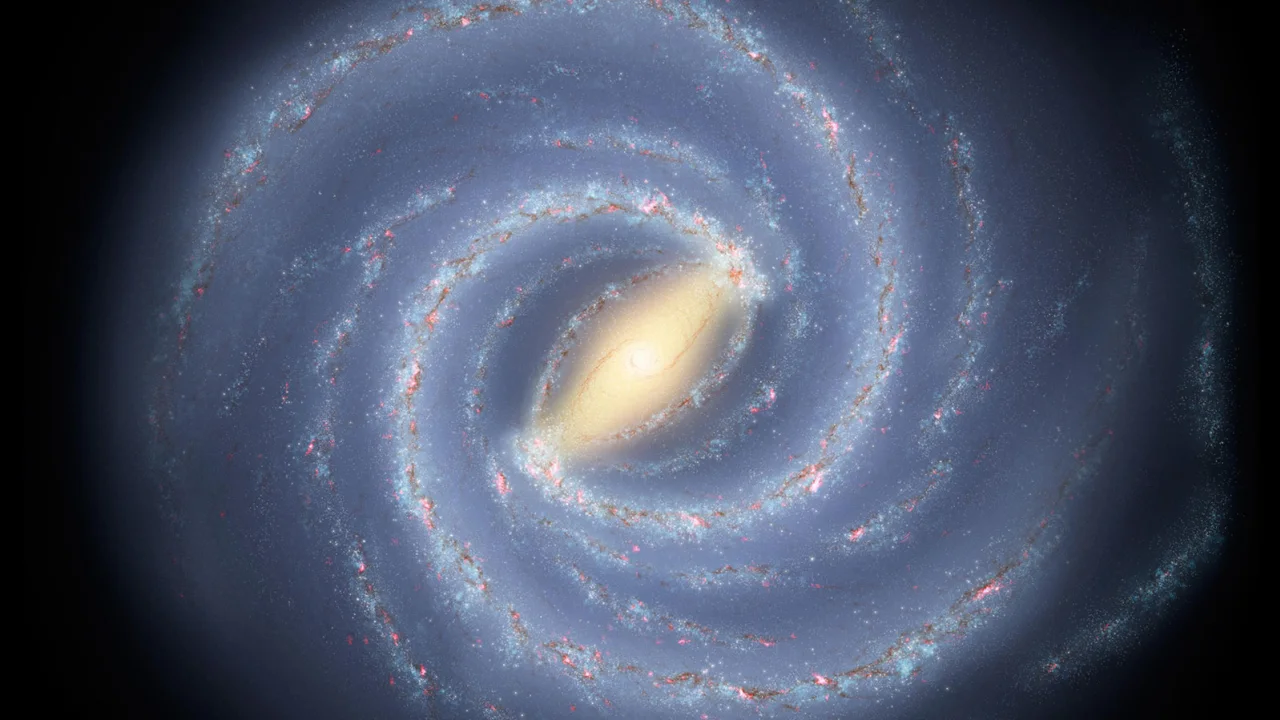(CNN) — Astronomers have discovered a puzzling phenomenon in the distant universe — a galaxy that looks a lot like the Milky Way — and it’s challenging major theories about how galaxies form.
The distant system, called Sears-2112, was discovered by an international team using the James Webb Space Telescope.
Like our home galaxy, the newly discovered Cirrus-2112 is a barred spiral galaxy and the most distant one ever observed. The bar in the center of the structure is made of stars.
Ceers-2112 formed shortly after the Big Bang created the universe (estimated to be 13.8 billion years old), and the galaxy’s unique structure was already in place 2.1 billion years later.
Considering the distance between Earth and objects since the early days of the universe, when telescopes like Webb observe light from distant space, it’s like looking into the past.
“Unexpectedly, this discovery reveals that galaxies like ours already existed 11.7 billion years ago, when the universe was 15% as old,” Luca Costantin, lead author of the study, said in a statement. He is a postdoctoral researcher at the Spanish Higher Science Council at the Spanish Astrobiology Center in Madrid.
Astronomers were amazed to find a galaxy so organized and structured at a time when others were so disorganized. Although massive spiral galaxies are common in the Milky Way’s cosmic neighborhood, this is not always the case.
The revelation, made possible by Webb’s highly sensitive light detection capabilities, is changing scientists’ understanding of galaxy formation and the early stages of the universe.
“The discovery of SEARS-2112 shows that galaxies in the early universe may have been similar to the Milky Way,” study co-author Alexander de la Vega, a postdoctoral researcher at the University of California, Riverside, said in a statement. “This is surprising because galaxies in the early universe were very chaotic, and some had structures similar to the Milky Way.”
A study detailing the findings was published Nov. 8 in the journal Nature.
Early evolution of barred spiral galaxies
Astronomers assumed that barred spiral galaxies, such as the Milky Way, did not appear until the Universe reached half its current age, because it was believed that billions of years of galactic evolution were required before the massive collections of stars in galaxies formed central bars. .
The bars form when stars within spiral galaxies rotate in an orderly fashion as they orbit the Milky Way. Until now, astronomers did not believe that early galaxies were stable enough for bars to form or persist.
But the discovery of Sears-2112 suggests this evolution took about a billion years or less, de la Vega said.
“Almost all bars are found in spiral galaxies,” de la Vega said. “The band in Sears-2112 suggests that galaxies are maturing and ordering much faster than we previously thought, meaning that some aspects of our theories of galaxy formation and evolution may need to be revised.”
Dark matter research
De la Vega believes astronomers need to change their theoretical models of how galaxies form and evolve to account for the amount of dark matter included in the most ancient galaxies.
Although dark matter has not been detected, it is believed to make up 85% of the total matter in the universe, and is the object of the European Space Agency’s Euclid telescope. It is possible that dark matter played a role in the formation of the bars.
The finding also suggests that bars can be detected in early galaxies, even though older galaxies are much smaller.
“The discovery of Sears-2112 paves the way for finding more bars in the young universe,” de la Vega said. “At first I thought that detecting and estimating the properties of bars in galaxies like Cirrus-2112 would suffer from measurement uncertainties. But the power of the James Webb Space Telescope and the experience of our research team have enabled us to place strong limits on the size and shape of the bar.




